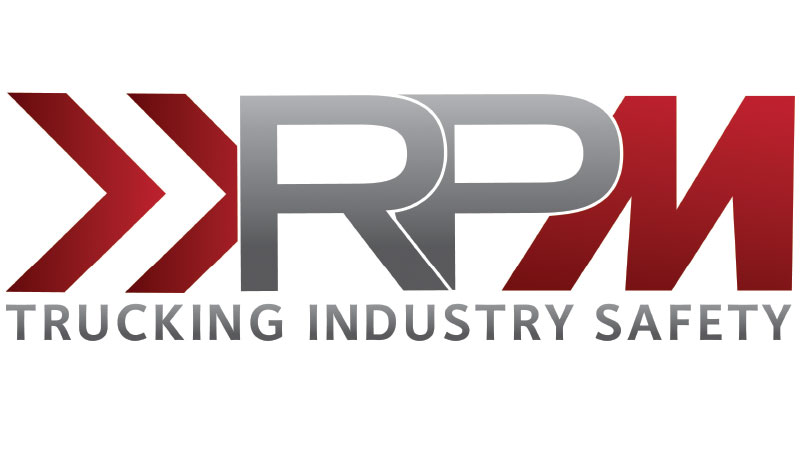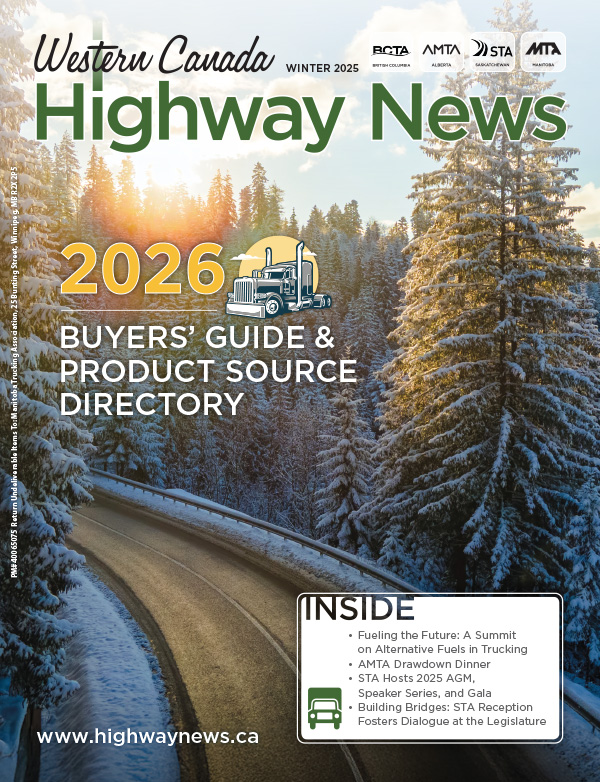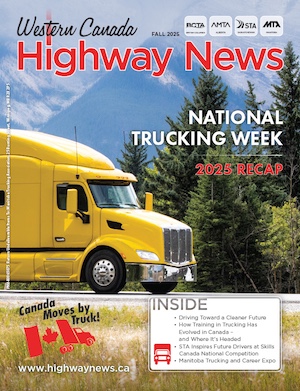All it takes is an email to get started.
That’s what advisors at RPM want you to know. RPM is Manitoba’s trucking industry safety program, and has been since 2015. Overseen by the Manitoba Trucking Association, the program has certified 25 companies since it began.
What would motivate a company to register with RPM? Any number of reasons: a desire to improve the focus on safety within the organization, a near-miss or workplace incident that emphasizes the need for such a program, or regulatory or legal obligations.
Studies have shown that SAFE Work certified companies have
• 42% lower total injury rates,
• 37% lower injury costs per worker, and
• 49% fewer workdays taken for time-loss injuries.
Aren’t those numbers ones you would like to see reflected in your workplace?
Furthermore, SAFE Work Certified companies see reduced WCB premiums over time, improved employee engagement, a rebate on WCB premiums, and assistance in meeting legal safety requirements (source: SAFE Work Manitoba). In 2019, Manitoba’s trucking industry saved almost $2,000,000 in reduced WCB premiums. Those are numbers everyone would like to see reflected in their workplace.
“Many times, people focus on the financial savings of becoming SAFE Work Certified, but there are many intangible benefits to certification that are equally important,” explains Dave Gillis, RPM Manager. “Consider the costs associated with training new employees: they are significant. SAFE Work Certified companies are shown to have a more engaged workforce, which means lower turnover for your organization. There are lots of benefits to certification beyond saving on your WCB premiums.”
So what happens after the initial contact? Assuming you are in one of the three WCB classification codes related to the trucking industry (50102, 50109, or 50111), you will complete a SAFE Work Certified Application and return it to RPM. This is a fairly straightforward document, outlining your location(s), corporate information, and a survey of what already exists for your corporate safety culture. From that, RPM’s advisers will customize a training program for you to get you on your way to SAFE Work Certification (in Manitoba, COR Certification and SAFE Work Certification are the same. In this article, we will use the term SAFE Work Certification/Certified, but know that it is the same as COR Certification in other provinces and industries).
After registration and being assigned to an advisor, you will begin your training. Currently, there are two Safety Program Advisors with RPM: Michael Thiessen and Stacey Wills. Both have Occupational Safety & Health Certification and are very knowledgeable on topics including employer management, provincial and federal occupational safety and health regulations, and training. The trainers at RPM are Rebekka Miles and Susana Carias. Again, both bring to RPM a wealth of experience and knowledge in Health and Safety training. Rounding out the RPM team is Olufisayo Segun, our Safety Program Administrator who also helps with course development, monitoring ever-changing Provincial and Federal legislation. Together, our team will ensure that your OH&S program not only meets the requirements of certification, but also meets the specific needs of your organization. All of the work is overseen by Gillis, who has decades of experience in the transportation industry and a vast knowledge of Occupational Health and Safety.
There are four required training modules to take to achieve SAFE Work Certification: Safety & Health Leadership, Principles of Safety & Health Management, Maintenance Auditor, and one of Safety & Health Committee OR Safety Representative (depending on the size of your organization). You must be registered in the program to take these courses. These are full-day courses. You will be provided with a wealth of resources to take back to your business, including updated legislation and templates to customize for your workplace.
Also keep in mind that there is no time requirement from registration to completion of your training. We understand the pace of the trucking industry. As well, some companies will be further ahead in their occupational health and safety program than others upon first applying, so some companies will need more time to implement a full OH&S program. That’s okay; we want you to do it right, not quickly.
Once training is wrapped up, the next step is a gap analysis. This is conducted with an advisor from RPM, before you have your certification audit. As its name indicates, we try to find any gaps between where your safety program is and where it needs to be to pass a certification audit. We will work with you and your organization to ensure that gap is filled.
Once that is done, it’s time for the big moment: your SAFE Work Certification audit. To get this audit started, you first must complete and submit an audit application. The SAFE Work Certified audit is an independent, performance-based review of your company’s safety and health management system. The audit is performed by an independent auditor taken from RPM’s network of SAFE Work Certified auditors. The auditor’s fee is the only part of SAFE Work Certified process not covered by the industry levy.
Once you pass the audit, you are now officially a SAFE Work Certified company and are eligible for rebates on your WCB premiums. “Companies that choose to complete the certification process have demonstrated a real commitment to safety. They have shown that safety is a priority at their organization, and they deserve recognition for this,” says Gillis. Companies that have met all criteria and become SAFE Work Certified are eligible to receive a prevention rebate of 15% on their WCB premium, while smaller employers will receive up to a maximum of $3,000.
However, there’s more to RPM than working with companies to develop and enhance their occupational safety and health programs. While you have to be registered with RPM to complete the courses required for certification, RPM also offers a number of professional development courses for anyone registered with RPM and in one of the three previously mentioned WCB classification codes. These courses cover a number of key issues in the occupational health and safety field, including hazard identification and risk control, incident reporting and investigations, first aid, and psychological first aid.
There are also online courses, offered through WCB and the CCOHS (Canadian Centre for Occupational Health and Safety). Covering a range of topics, some of the more popular courses include Canada Labour Code Part II: An Overview, Impairment & Cannabis in the Workplace, and WHMIS 2015 for Workers. This training is free for all workers in Manitoba and beneficial in ensuring that workers understand that they can be safety leaders in their organizations.
The team at RPM transitioned the training quickly as a result of the COVID-19
pandemic, and are now able to offer courses in-class (to a smaller number of attendees due to physical distancing requirements), through distance learning via Zoom, and e-courses. Several of our Program Development courses can now be completed online, and we are working daily to add more to our e-course library. “It was a challenging transition to move the courses online, but one that we welcomed because this really is the way training will be done in the future,” adds Gillis. “However, the finished product is one we are proud of, and one we are comfortable providing in an online or remote classroom environment.”
It doesn’t stop at classroom training and certification, though: RPM has recently added testing capabilities for auditory testing and air quality measures. These tests will allow you to further improve your workplace for your employees through testing noise levels and for CO, CO2, and NO2 levels. RPM advisors are also available to consult when needed, for those companies registered in the program.
“In the short time that RPM has been around, we have made great strides to ensure that our safety program is well-rounded and all-encompassing. With the support of SAFE Work Manitoba, the prevention arm of the WCB, and the Manitoba Trucking Association, we have been able to see the whole picture and provide what Manitoba’s trucking industry needs when it comes to safety,” concludes Gillis.
Yes, it takes some time, and yes it takes some effort, but the same can be said about most things that improve life. And in these current times, we all know and perhaps appreciate a little more a workplace that values employees by prioritizing their safety.
All it takes is an email to get started. What do you have to lose?


 1-866-985-9791
1-866-985-9791



